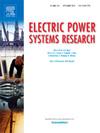回顾历史停电的恢复经验及并行恢复的决策支持框架(以案例为例)
IF 4.2
3区 工程技术
Q2 ENGINEERING, ELECTRICAL & ELECTRONIC
引用次数: 0
摘要
停电后的电力系统恢复预计在8-12小时内,但历史数据表明,在某些情况下可能需要几天的时间。虽然大量的研究集中在停电的原因上,但对为什么恢复工作需要更长的时间以及在恢复计划中采取哪些监管措施的关注不够。本综述调查了2000-2024年期间10次著名的停电事件。确定的关键问题包括负载协调(24%)、监测和控制(24%)、修复计划(19%)和保护(14%)。本文主要从海岛形成、黑启动能力、无功能力、过电压控制和块负荷提取等五个方面进行了综述。回顾了美国、澳大利亚、爱尔兰和加拿大系统运营商的行业实践,以及基于网络拓扑和停电前提条件的恢复策略,考虑了三十多份行业报告和七十多篇研究论文。为了解决恢复问题,提出了一个综合决策支持框架。并将该框架应用于改进后的ieee9总线和ieee39总线测试系统中。恢复曲线的发展,提供了可视化的逐渐恢复负载随时间的见解。这项审查工作强调需要不断改进修复指南,加强修复时间的整体改进。最后,提出了未来可再生能源发电电网对该框架进行修改的方法和可能的研究方向。本文章由计算机程序翻译,如有差异,请以英文原文为准。
A review of restoration experience from historical blackouts and a decision support framework for parallel restoration with a case study
A power system restoration after a blackout is expected within 8-12 hours, but historical data suggest that it can take up to several days in some occasions. While extensive research has focused on causes of blackouts, there has been insufficient attention on why restoration efforts taking longer time and what regulatory measures are taken during restoration planning. This review investigates ten notable blackouts during 2000-2024. The identified key issues include load coordination (24%), monitoring and control (24%), restoration plans (19%), and protection (14%). This review focuses on five steady state restoration issues including forming islands, black start capability, reactive power capability, over-voltage control and the block load pickup. The industry practice of system operators in the USA, Australia, Ireland and Canada and the restoration strategies based on network topology and blackout pre-conditions are reviewed considering over thirty industrial reports and seventy research papers. To address the restoration issues, a comprehensive decision support framework is proposed. Additionally, this framework is applied to a modified IEEE 9 bus and IEEE 39 bus test system. The restoration curve is developed, offering insights to visualize the gradual restoration of load over time. This review work underscores the need for continuous improvement in restoration guidelines, enhancing overall improvement in the restoration time. Further, how the framework can be modified for future grid with renewable based generation and the possible research directions are also proposed.
求助全文
通过发布文献求助,成功后即可免费获取论文全文。
去求助
来源期刊

Electric Power Systems Research
工程技术-工程:电子与电气
CiteScore
7.50
自引率
17.90%
发文量
963
审稿时长
3.8 months
期刊介绍:
Electric Power Systems Research is an international medium for the publication of original papers concerned with the generation, transmission, distribution and utilization of electrical energy. The journal aims at presenting important results of work in this field, whether in the form of applied research, development of new procedures or components, orginal application of existing knowledge or new designapproaches. The scope of Electric Power Systems Research is broad, encompassing all aspects of electric power systems. The following list of topics is not intended to be exhaustive, but rather to indicate topics that fall within the journal purview.
• Generation techniques ranging from advances in conventional electromechanical methods, through nuclear power generation, to renewable energy generation.
• Transmission, spanning the broad area from UHV (ac and dc) to network operation and protection, line routing and design.
• Substation work: equipment design, protection and control systems.
• Distribution techniques, equipment development, and smart grids.
• The utilization area from energy efficiency to distributed load levelling techniques.
• Systems studies including control techniques, planning, optimization methods, stability, security assessment and insulation coordination.
 求助内容:
求助内容: 应助结果提醒方式:
应助结果提醒方式:


